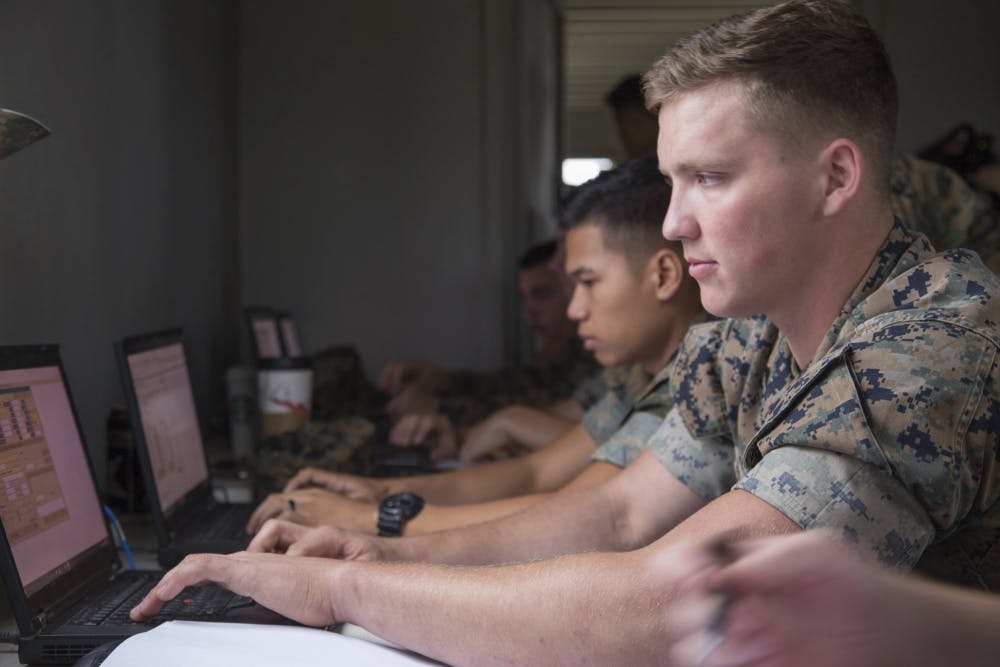Defense Digital Service Completes Cloud Software Pilot with Marine Corps
The service’s first cloud-based software program included a rapid ATO process.

The Defense Digital Service helped the Marine Corps deliver its first cloud-based software program this year through a project called the Battle for Mon Cala.
The partnership began in fall 2019 when the military service told DDS it was moving to a cloud environment and wanted to develop and build software for the cloud. To help the Marines reach this goal, DDS helped to pilot a revamp of the Marine Corp global combat support system, DDS Deputy Director Katie Olson said during Tuesday’s FCW event.
The organizations opted to pilot the new software program for the global combat support system due to the flawed nature of the legacy system.
“The system is meant to intake all of these logistics requirements,” she said. “I think the first time the [DDS] team went out there, they observed the receipt of I think a few barrels of motor oil or something like that, and it took two Marines the better part of an hour to log into the system and note that they had in fact received the supply.”
In January, DDS and the Marine Corps launched the 90-day pilot, called the Battle for Mon Cala, to implement an improved global combat support system. The partnership was the first between the two organizations, but Olson emphasized that it was successful because DDS focused on developing with, not for, the customer.
More specifically, that collaboration led DDS to work closely with users at the Marine Corps Quantico supply house to understand their pain points. Then, DDS personnel roped in five Marine Corps engineers, as well as a team of user experience experts and program managers to design a better product.
“We wanted to help them prove that [even though] they’re moving to a cloud-based environment, there’s the talent to do it internally,” Olson said. “There’s a healthy number of engineers in all of the services that aren’t necessarily being leveraged for their full engineering talent, so we wanted to prove that as we’re moving to these types of environments and as technology becomes more complex, you have to reply to internal talent.”
Olson further explained that her team brought a new iterative approach to the authorization-to-operate (ATO) process to accelerate the project and overcome typical bureaucratic barriers to software development.
“Despite the fact that the team had completed this new functionality, they couldn’t implement it without getting an ATO … from the Marine CIO,” Olson said. “What we worked with the CIO’s office to test out something called rapid ATO. Typically, the authority to operate is issued after production, so after software development has been completed, and what we asked asked them to do is to think about starting the process earlier, so running the ATO process parallel to production. That means that you’re doing the security compliance and review as you go along.”
The rapid ATO was another process that required DDS to work closely with its Marine Corps customer, and this new approach also led to not only faster completion of the product at an under-budget price tag, but also enhanced security, Olson said.
“A project like the Battle for Mon Cala demonstrates disruption in a couple of ways,” Olson said. “We’ve, again, really encouraged the services to rely on their own talents … and encouraging better people management. The second thing is that we encouraged really questioning processes and pushing on to ensure that we’re getting the intended result, which is pure product, but that we’re doing it in a way that’s timely.”
In the future, Olson said she’s looking forward to applying the rapid ATO process to other projects that DDS works on across the Defense Department.
This is a carousel with manually rotating slides. Use Next and Previous buttons to navigate or jump to a slide with the slide dots
-

DOD Has a New Cyber Resiliency Assessment Program
Defense officials tout the continuous assessment feature and scalability of the new program amid increased cyber threats.
5m read -

Transitioning Systems for Modern Agency Missions
IT modernization is a constant process necessary for improving customer service, mission delivery and collaboration.
40m watch -

Cyber Resilience and Recovery Amid Evolving Cyber Threats
Data durability is a key aspect of NIST’s cybersecurity framework for public and private organizations.
21m listen -

How Tech Enables Environmental Justice at EPA
The agency wants to eliminate bias and establish new tech standards to reduce greenhouse gas emissions.
39m listen








